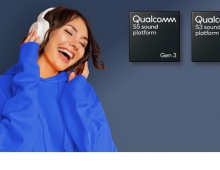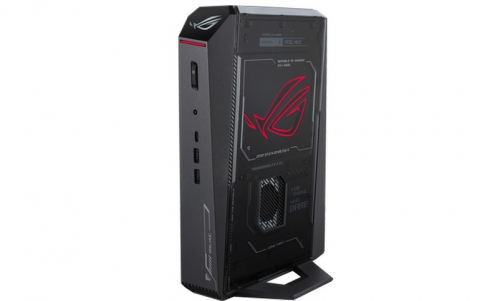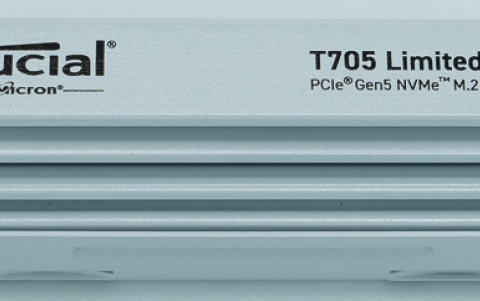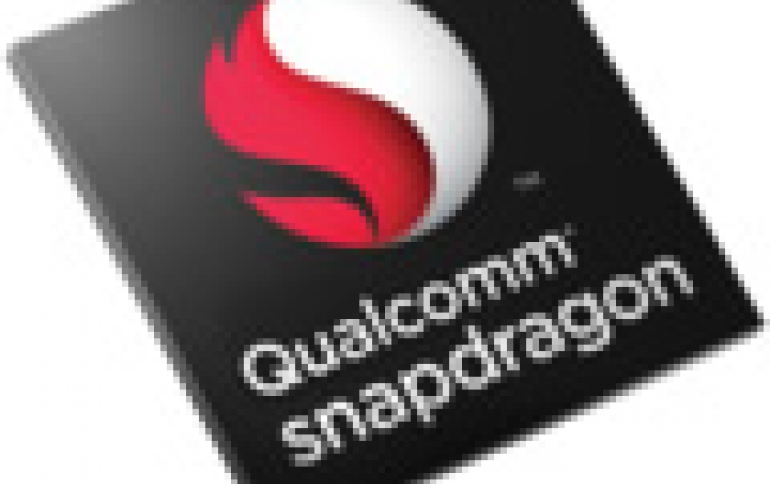
Qualcomm Officially Announces New Snapdragon 820 Mobile Processor
At a Chelsea loft in New York City today, Qualcomm Technologies is showed off its new Qualcomm Snapdragon 820 processor for the first time as the company hopes to get some of its mobile mojo back. Qualcomm says the new Snapdragon 820 has been designed around enriching visual quality and audio clarity, as well as developing more intuitive ways to interact with devices, to generate "immersive" experiences. In the process, Qualcomm Technologies also infused the Snapdragon 820 with fast performance, connectivity, strong security, and long battery life.
The Snapdragon 820 will be manufactured on (Samsung's) 14nm FinFET technology and includes:
- X12 LTE modem
- 64-bit capable custom Kryo CPU
- Adreno 530 GPU
- Hexagon 680 DSP with Hexagon Vector eXtensions and a sensor processing "low power island"
- 14-bit Qualcomm Spectra ISP
- Premiere features and capabilities leveraging the Qualcomm Zeroth platform, the company’s first neural processing platform
- Qualcomm Snapdragon Smart Protect for real-time, on-device machine learning for detection of zero-day malware threats, designed to deliver improved personal privacy and device security.
| Snapdragon 810 | Snapdragon 820 | |
|---|---|---|
| CPU | Up to 2 GHz quad-core ARM Cortex A57, quad-core A53 CPU 64-bit |
Up to 2.2 GHz quad-core Qualcomm Kryo CPU 64-bit |
| GPU | Adreno 430 GPU |
Adreno 530 GPU |
| Modem | X10 LTE
RF360 support |
X12 LTE
RF360 support |
| Video/Audio | 1080p and 4K Ultra HD capture, playback, and display 4K capture and playback with H.264 (AVC) and H.265 (HEVC) |
1080p and 4K Ultra HD capture, playback, and display 4K capture and playback with H.264 (AVC) and H.265 (HEVC) |
| Camera | Up to 55 MP |
Up to 28 MP 2x Spectra Camera ISP |
| Display | 4K native and 4K external displays Ultra HD on-device display concurrent with Ultra HD output to HDTV |
4K native and 4K external displays Ultra HD on-device display concurrent with Ultra HD output to HDTV |
Qualcomm's Kyro processor is expected to provided twice as much computing power as the cores in the Snapdragon 810. Graphics from the Adreno 530 promise a 40% boost, as well.
The chip's 14-bit Qualcomm Spectra camera Image Signal Processor (ISP) supports the capture of up to 28 megapixels.
The integrated LTE modem supports Category 12 network speeds, theoretically pegged at 600 Mbps downloads and 150 Mbps uploads. Wi-Fi gets a boost too, supporting both 802.11ad and 802.11ac 2x2 MU MIMO standards. And Qualcomm is boasting that the Snapdragon 820 is the first commercial chip to work with LTE-U, a way to access both licensed -- think carrier supported -- and unlicensed wireless spectrum for mobile broadband.
In addition, the Snapdragon 820 adds Quick Charge 3.0 technology, which Qualcomm says is 38% more efficient than the current Quick Charge 2.0 charging found in many current, high-end devices.
After a hiccup in 2015, Qualcomm's Snapdragon 820 is the a key to the company's rebound. New smartphones powered by Snapdragon 820 will launch next year, including the Samsung galaxy S7.
On the other hand, Qualcomm faces competition from Samsung;s own Exynos SoC designs and Huawei's Kirin 950.
Qualcomm also showcased a handful of demos.
The first demo showcases the ability of the Snapdragon 820 to generate photorealistic video graphics when processing detailed imaging files using both the Qualcomm Adreno 530 GPU and the Qualcomm Kryo CPU. This also features the latest version of Unreal Engine (UE4) from Epic. This photorealistic application creates a realistic environment by implementing:
- Screen space reflections (selectable)
- Dynamic reflections that move relative to view angle
- High Dynamic Range Rendering (HDRR)
- Preservation of details that might be otherwise lost in normal rendering due to lower contrast
- Realistic color and lighting
- Simulation of the light adaptation of the eye
- Temporal anti-aliasing

Another demo showcases Qualcomm Technologies’ deep-learning-based Zeroth neural processing platform, taking advantage of the heterogeneous cores processing on the Snapdragon 820. Qualcomm Snapdragon Scene Detect is designed to automatically and quickly (within fractions of a second) analyze and classify recognizable image types and categories (mountains or people, for example).

Images are then organized into these categories in the photo gallery. You can also create your own image categories, instead of relying solely on those that come preloaded. In addition to creating their own categories, you can "train" the phone by adding new images or removing those that don’t match the desired results. The deep learning technology in Snapdragon Scene Detect is made to learn on the job to give users a better experience and more control over their on-device photo collections.
The Snapdragon Low Light Vision (LLV) technology is designed to deliver image quality and performance with two major benefits: adaptive brightness and noise reduction. LLV can also compensate for HDR (high dynamic range) scene and motion artifacts that are usually caused by camera movement or movement in the scene, so snapshots in lower-light conditions will look super clear without the visual noise typically seen in photos taken on mobile phones.
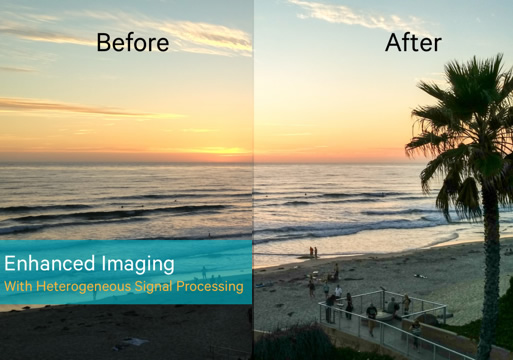
To help some of these algorithms run even faster and at lower power, our Qualcomm Spectra ISP taps into the low-power, yet high-performance, processing capabilities that the Qualcomm Hexagon 680 DSP with the Hexagon Vector eXtension is designed for.








